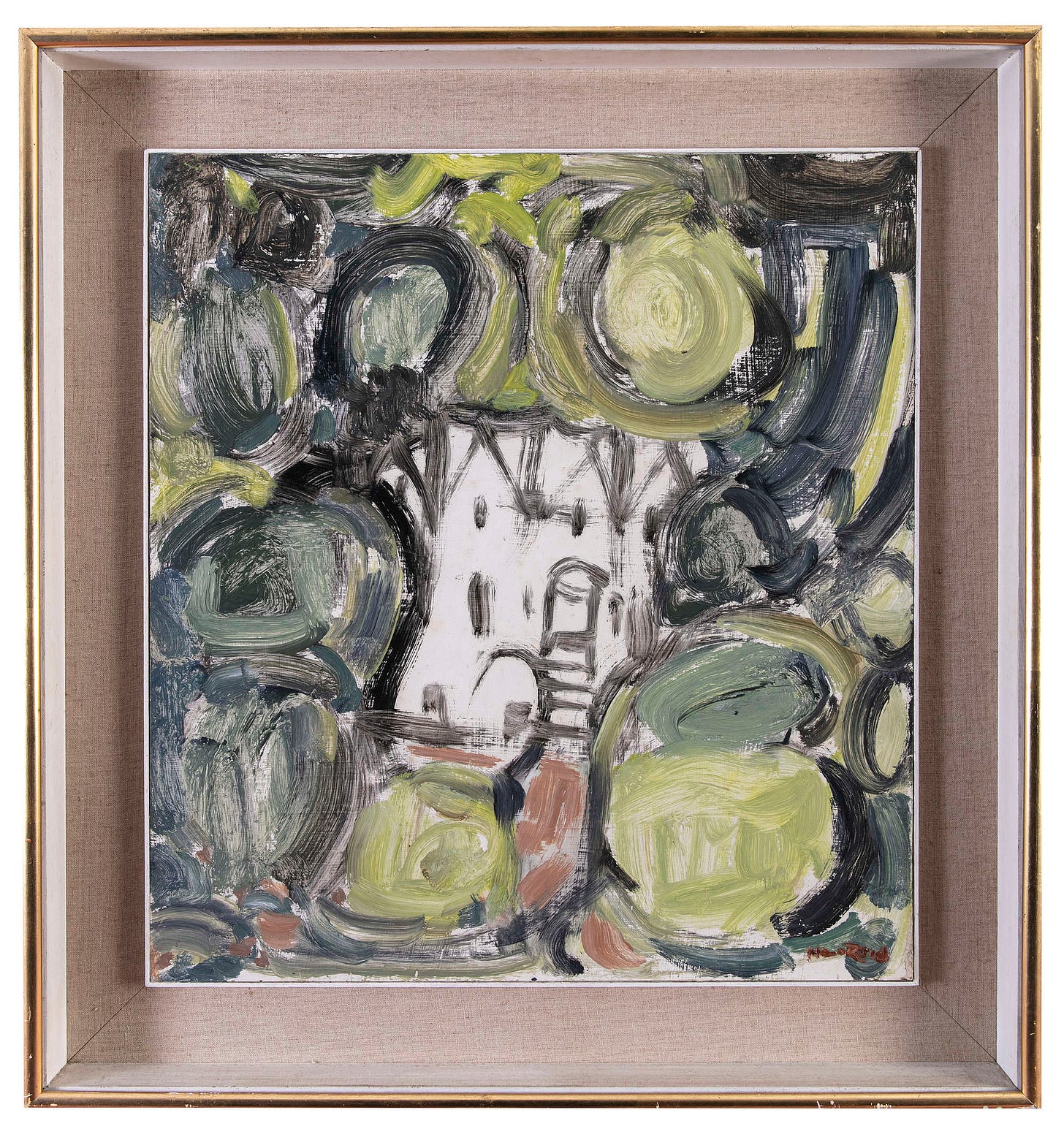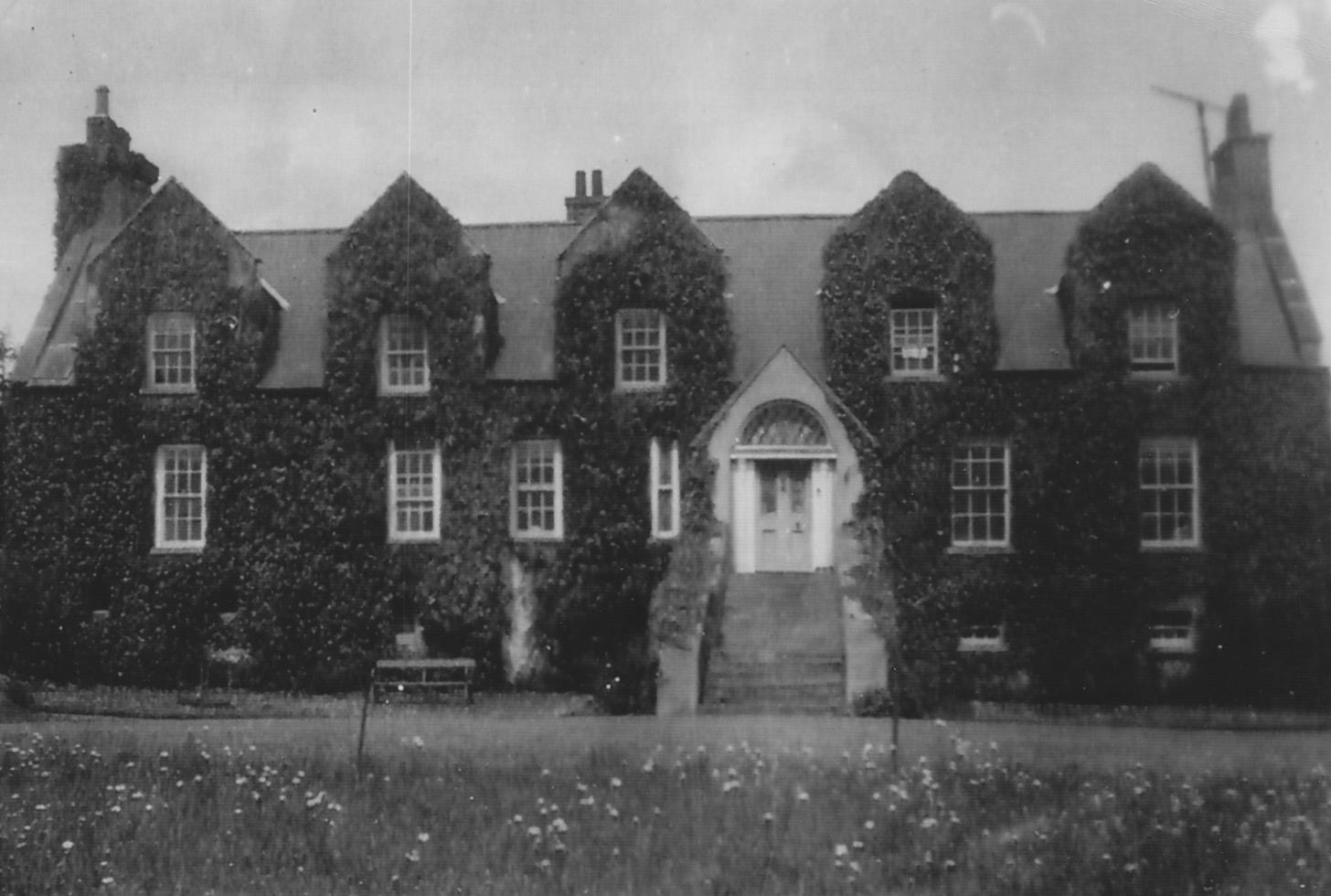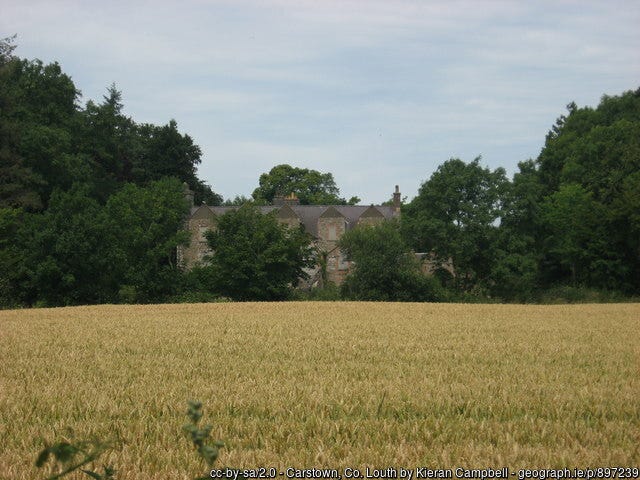Adamantine: An Exhibition Marking the 40th Anniversary of the Death of Artist Nano Reid
Running until 22 January, over 50 of her finest works are on display in Drogheda's Highlanes Gallery
This past weekend I visited an exhibition dedicated to the late Drogheda artist Nano Reid which features a selection of over 50 paintings taken from across her entire career.
Nano Reid was born in Drogheda in 1900 to a middle-class Catholic family. Her family owned a public house, above which they lived for a time. This public house is still in operation today, now known as Clarkes, and is one of Drogheda’s finest. Reid displayed artistic ability from an early age and went on to become a renowned artist. After many years living in Dublin, having studied for a time in Paris and London, Reid returned to live in Drogheda in her later years. She died in 1981 and is buried in St. Peter’s cemetery in Drogheda.
When it comes to art of this type my appreciation is rather unsophisticated - art history, influences, styles, the skill and technique of the painter are all rather lost on me and are not something that I can really give justice to here. My interests lie elsewhere, and to be honest, an exhibition of paintings of this kind would not normally be something that would be of any special interest to me. But Nano Reid is an exception. Reid had a great interest and love for history, her hometown, the Boyne Valley, Irish mythology, and all things antiquarian. These interests provided the inspiration for much of her work. A large amount of the paintings featured in this exhibition draw on these themes. The monastic ruins of Mellifont and Monasterboise feature along with a host of other local landmarks such as the Boyne viaduct, local churches, etc. The attached labels provide little information beyond the name and year of composition, so it is left to the viewer to explore the paintings. I spent a pleasant hour or so identifying local landmarks in many of them.
One painting especially caught my attention; 1973’s Secluded Mansion. A review of the exhibition in the Sunday Times had this to say about it;
Ancient Cave hangs next to Secluded Mansion (1973). Reid has scraped back paint to expose the texture of the near bare board. The cave is a tangle of darkness. Outside, yellow-navy clouds gather over the head of a figure, perhaps with a shovel or walking stick, and buildings loom behind. Secluded Mansion may refer to family properties sold along the way. Reid moved between upstairs pub lodgings and other family homes as a child.
When I saw this painting I was struck by the resemblance to Carstown House.
Built in 1612 and consisting of one storey over a high basement with an attic of five gabled windows which were subsequently given sashes. A coat of arms with a date of 1612 is carved in stone over the hall door and is repeated on a massive stone mantle over the fireplace in the main living room. The initials 'O.P.' and 'K.H.' on either side of the coat of arms would appear to represent the names of Oliver Plunket and Katherine Hussey, the then owners of the house (Tempest 1943a, 219-20). The stones of the mantle are joggled and the engraved portion is the keystone. Entry to the house is gained by the original steps up from the ground level to the first-floor hall door through a later porch. The first floor had two rooms, a large one at the W side of the doorway which has the fireplace in the N wall and a smaller room to the E. The attic or second floor was divided in a similar way to the one below but contained no method of heating other than small fireplaces at the gable ends which appear to be later additions. (Tempest 1943a, 216-21; Bence-Jones 1978, 60)
Carstown House, as described above in the Archaeological Survey of County Louth, is a significant 17th century manor house located north of Drogheda. Uninhabited since at least the 1990s, the house was gutted by fire in 2017, reducing it to a shell. Robert O’Byrne (The Irish Aesthete) has written a series of fine articles about Carstown, tracking its history, significance, dilapidation, and the sad devastation of the fire.
Given the almost unique importance of Carstown House, proximity to Drogheda, and Reid’s antiquarian interests, she would no doubt have been familiar with the house.
Comparing the photographs to Reid’s Secluded Mansion the similarities seem clear; the gabled windows, the setting, the steep stairs leading to a round-headed (fanlight?) main door on the first floor, and the ground floor windows.
Whatever your opinion on my thoughts about Secluded Mansion, I recommend taking the time to visit this well-executed exhibition of over 50 paintings by Nano Reid, even if art is not something you are ordinarily interested in. It runs until 22 January and entry is free. Due to Covid related restrictions, you need to book your free tickets on Eventbrite beforehand.
Highlanes Gallery has also produced a book to complement the exhibition which contains a host of information about Nano Reid and her art, along with copious illustrations. An attractive hardback, it costs €20 and can be bought in the gallery shop.
Sources/further reading:
'Archaeological Survey of County Louth' (Dublin: Stationery Office, 1991).
Bence-Jones, M. 1978 ‘Burke's Guide to Country Houses: Volume 1 Ireland’. London. Burke's Peerage Ltd.
Tempest, H.G. 1943 ‘Two fireplace inscriptions 1584 and 1612’. County Louth Archaeological and Historical Journal 10 (3), 216-21.
https://www.buildingsofireland.ie/buildings-search/building/13902116/carstown-house-carstown-louth
https://www.eventbrite.ie/e/book-your-gallery-visit-tickets-112092050340
https://highlanes.ie/whats-on/exhibitions/nano-reid-adamantine/
https://theirishaesthete.com/2015/01/26/a-lamentable-waste-2/
https://theirishaesthete.com/2015/01/28/mapping-the-past/
https://theirishaesthete.com/2017/10/04/another-unnecessary-loss/






